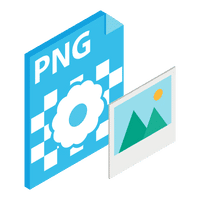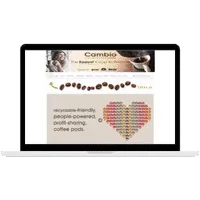Amazon Product Images Best Practices [EXAMPLES]
Amazon Product Images Best Practices
Amazon product images are one of the top contributing factors to clicks and sales.
Adhering to Amazon product images best practices is one of the smarter ways that small and medium brands can compete with big brands.
Proven Amazon product images best practices like showing your product next to gift-wrapped packaging implying it’s giftable, answering FAQs through your imagery and more make the difference you need to drive significant sales.
In over 10 years as a Fractional CMO, Amazon Consultant, and eCommerce Consultant, not to mention CEO, I’ve seen just about every mistake and the lessons from them. That means you get all the learnings without the scars.
Amazon product images best practices can be hard to come by because no one wants to share their best tactics.
What’s more, copying your competitors’ images not only makes it impossible for you to stand out and help customers understand why you’re superior but also you don’t know if their product images are why they’re driving sales. Is it the images or their large advertising budgets across Google, Social Media, Amazon Influencers & more?
If one thing is for sure, getting your Amazon product images right makes or breaks a brand.
That’s why I put together this in-depth guide of Amazon product images best practices you can use TODAY to increase sales on Amazon quickly whether you’re an Amazon Seller Central seller, Amazon Vendor Central seller, using Amazon FBA, FBA Small and Light, or selling Amazon B2B.

Amazon Product Images Specifications
Amazon product image specifications will need to take into account that you’re not simply using the product photos and product imagery for gallery images.
You’ll want to account for the fact that you’re using the images repurposed for an array of other visual content:
- A+ Content
- Amazon Posts
- Amazon Storefront
- Website
- Social Media
- Email Marketing
- Amazon Influencers
- Product Inserts
- Product Packaging
- & More
With that in mind, when you get your product photography and are considering setting up your main hero image and gallery images for image optimization, here are the Amazon product image specifications.
Amazon Product Image Specifications:
- IMAGE RESOLUTION: 5,000 x 5,000 minimum for originals.
- Scaled down to 2,000 x 2,000 for most marketplaces and platforms.
- Amazon product picture guidelines are 2,000 x 2,000 pixels.
- High-quality graphics are required to allow for zoomable images.
- Amazon product picture guidelines are 2,000 x 2,000 pixels.
- Image quality can be scaled down, but cannot be scaled up.
- Scaled down to 2,000 x 2,000 for most marketplaces and platforms.
- IMAGE FILE SIZE: Under 10MB
- IMAGE FILE TYPE: PNG
- VERSIONS: 1 with white (#FFF) background, 1 with no background.
- QUANTITY: Amazon recommends 1 hero image with at least 6 gallery images or 5 gallery images and a video.
NOTE: Images meant for Amazon or Walmart cannot contain references to your website or social media.
That said, once you’re clear on the Amazon product image specifications, you’re ready for the types of Amazon product images you’ll need.

Amazon Product Images Best Practices
As a consultant for Amazon, I can tell you that you’ll want to consider that Amazon product images best practices involve understanding what your customers want to see in addition to what will influence them to click and make a purchasing decision.
While you don’t need to be a master of neuro-aesthetics (the scientific practice of design that fires a hit of dopamine in the consumer’s brain influencing their preference.), you’ll still need to put thought in.
However, it wouldn’t hurt to learn neuro-aesthetics if you’re interested in Amazon Listing Optimization or to Reduce ACOS on Amazon and want a key competitive advantage over most Amazon sellers.
The truth is, simply looking at your competitors and making a few changes will not create a brand your buyer persona will love nor will it help the consumer understand why they should choose you over them.
Here are the exact Amazon product images best practices that I use in addition to product photography tips with my clients.
Amazon Product Images Best Practices:
- Renderings:
- Renderings should be used in place of actual product shots for Hero Images when possible as clarity and color saturation create a competitive advantage on product search results pages while increasing perceived value.
- Shooting:
-
- Tilts forward and slight angle perspectives can help increase perceived value by showing more surface area of the product.
-
-
- Adding props such as a bar of delicious chocolate next to a bottle of chocolate protein powder or coffee beans sprinkled around a K-Cup can help increase perceived efficacy.
- Include a shot of the product outside of the packaging next to the packaging to increase the perceived value.
- If your product is giftable, include imagery of your product next to gift-wrapped packages to encourage customers to gift your item.
-
- Editing:
-
- Color enhancements to make the product photography pop will help increase the perceived value of the product as well as help draw attention to product search result pages.
- Enlarging the product to take up as much of the frame as possible can help products stand out on product search results pages.
- Include notes of distinction such as:
- As seen on PR badges
- Certifications
- Awards
- Benefits & Features
- Key Success Indicators
- Credibility & Trust Badges
- Risk Mitigators (Warranty, Guarantee, Etc.)
- Branding:
-
- Any graphic enhancements or art that’s added to your images should be within the visual branding standards set in your brand style guide.

Amazon Product Images Types
The Amazon product image types you’ll need can easily be compiled into a few themes.
These themes will help you:
- Increase perceived value
- Overcome objections
- Answer frequently asked questions
- Build trust and credibility
- & more
These are the types of Amazon product images that I recommend to my clients to ask from their product photographer & graphic designer.
Amazon Product Image Types:
Hero:
- Showcase your product against a white background that best represents to the customer what they will receive.
- NOTE: Take up at least 90% of available screen real estate.
- Taking up as much screen real estate as possible:
- Increases perceived value
- Results in higher click-through rates
- Stands out amongst competition
- Taking up as much screen real estate as possible:
- NOTE: Take up at least 90% of available screen real estate.
- If your hero image is product packaging, when possible, have the main point of emphasis on the product packaging be what the product is and what it does rather than the branding.
- NOTE: Customers are looking for confirmation of their search intent. You want the text on the packaging to give them confirmation your product is what they are looking for.
- This text should be as big as possible so as to easily be read on mobile devices when viewing product thumbnails and scrolling through marketplaces like Amazon, Google Shopping, Walmart & more.
- This will boost your Amazon CTR.
- NOTE: Customers are looking for confirmation of their search intent. You want the text on the packaging to give them confirmation your product is what they are looking for.
Angles:
- Showcase your product from various angles so customers can easily understand all of the important features and characteristics of your product.
FAQ:
- Consider the most frequently asked questions about your product and make sure you have photography that answers as many of those questions as possible.
- EXAMPLE: If customers are concerned if your product will fit over top of a 2-inch door, include a gallery image showing your product fitting over a 2-inch door.
Sizes & Specifications:
- Clearly communicate sizes and specifications to your customers.
- Show numbers, units of measurements and lines next to your product.
- Show your product compared next to typical frames of reference.
- EXAMPLE: Your piece of jewelry next to a dime.
- Show your product on a model.
- Show your product inside a rendering of a home or environment with numbers and units of measurement.
- Etc.
Lifestyle:
- Showcase the happy or positive result of using your product.
- Show your product in action achieving a positive result that solves the problem, alleviates the pain point, or fulfills the desire.
Before & After, Old Way vs New Way or Zero to Hero Transformation:
- Showcase what life was like before using your product and what life is like after using your product.
User-Generated Content:
- Feature content from real customers using your products along with a testimonial or notes indicating the positive result of their experience.

Frequently Asked Questions
By the way, marketing in Amazon & eCommerce is complex, with lots of challenges that cost you time & money.
If you want to sell more and spend less, I’m a top-rated Fractional CMO, Amazon Consultant & eCommerce Consultant with 10+ years of Fractional CMO Services, Amazon Consulting & eCommerce Consulting experience, and come with a proven, one-of-a-kind system to drive sales.
Whether it’s consulting Amazon brands, working with great companies at my Fractional CMO Agency or helping grow eCommerce website sales at my eCommerce Consultancy I can help you sell more & spend less.
Get a quick free consultation.









![How to Switch From FBA to FBM [Step By Step]](https://www.sourceapproach.com/wp-content/uploads/2024/08/How-to-Switch-From-FBA-to-FBM-The-Source-Approach-Amazon-Consultant-eCommerce-Consultant-Fractional-CMO.jpg)
![Amazon Posts EVERYTHING You Need To Know [EXAMPLES]](https://www.sourceapproach.com/wp-content/uploads/2024/08/Amazon-Posts-Everything-You-Need-To-Know-The-Source-Approach-Amazon-Consultant-eCommerce-Consultant-Fractional-CMO.jpg)





